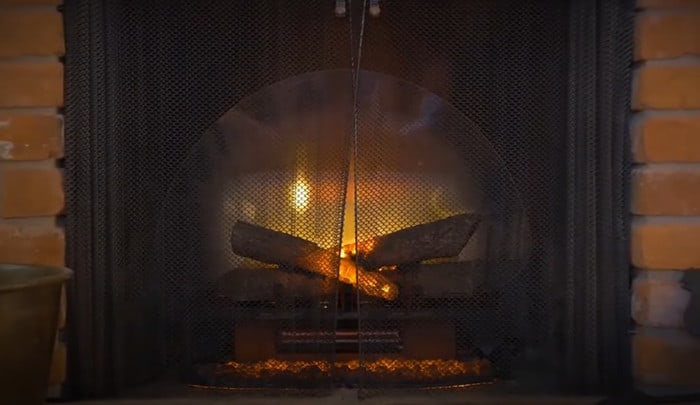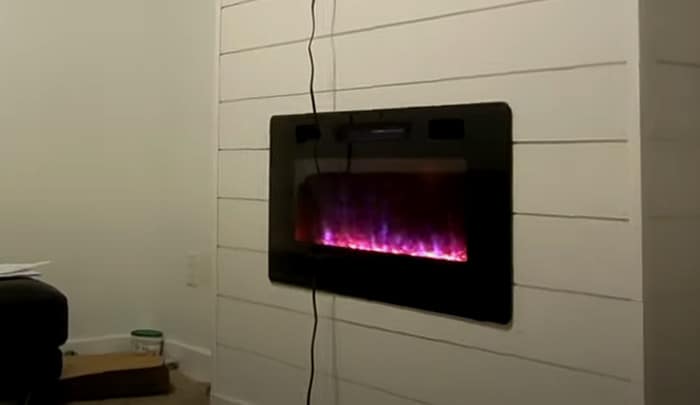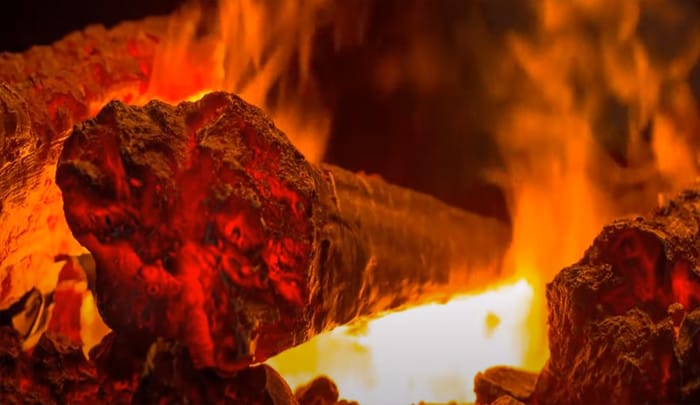For many homeowners, a traditional fireplace adds visual appeal and nostalgia to their living space – but for all its charm, this type of fireplace can come with more headaches than benefits. That’s why many are turning to electric fires as a more convenient and cost-effective alternative. From a hefty cost to the installation process to all the dust and ashes that come along with burning logs, a traditional fireplace requires a great deal of time and money. So, why not choose an electric fireplace to get the same aesthetic appeal without the hassle? Not only are electric fireplaces low maintenance and easy to install, they also produce just as much warmth and provide the same classic look as a traditional fireplace. In this blog post, we’ll go over everything you need to know about electric fireplaces, including the advantages and disadvantages of choosing this type of fireplace, the cost-savings associated with it, and the various styles and functions of electric fireplaces. Let’s get started!
Electric baseboard heaters and space heaters are two popular alternatives to a traditional fireplace. Wood-burning stoves and pellet stoves also provide efficient, cost-effective heat sources.
“Electric fireplaces are not just aesthetically compelling, but they also carry a myriad of benefits. In my decades of experience integrating cutting-edge technology into homes, nothing quite matches the efficiency, safety factors, and simplicity of installation of an electric fireplace. They eliminate the trouble of ash clean-up, the dangers of open flames, and reduce heat waste.”
Harold Reznik, Senior Architect, Certified Energy Advisor
Gas Fireplaces
Gas fireplaces are popular among many homeowners as they offer both convenience and efficiency in comparison to traditional wood-burning fireplaces are popular among many homeowners as they offer both convenience and efficiency in comparison to traditional wood-burning fireplaces. These fireplaces either run on natural gas or propane, and can be vented or ventless, depending on the model. Gas fireplaces are popular among many homeowners as they offer both convenience and efficiency in comparison to traditional wood-burning fireplaces allow users to push a button and instantly enjoy a real flame – no waiting for flames to die down or smoke to clear. Additionally, these fireplaces feature electric blowers that deliver warm air more quickly than other types of fireplaces. This makes them efficient source of heat when all glass doors are shut tightly.
On the other hand, gas fireplaces require a considerable investment upfront as they are both more expensive to purchase and install than electric fireplaces. Furthermore, they require regular maintenance such as professional inspections, cleanings, and adjustments in order to keep their extremely precise parts operating safely and efficiently. Gas leaks or malfunctions can also occur which require immediate attention from an authorized technician. Despite these cons, gas fireplaces continue to be a popular choice for those who want a realistic flame that radiates heat into larger areas more quickly than other models.
Now that we have discussed the benefits and drawbacks of gas fireplaces, let’s dive further into this topic by exploring the various pros and cons associated with them in the following section.

Pros and Cons of Gas Fireplaces
Gas fireplaces are popular among many homeowners as they offer both convenience and efficiency in comparison to traditional wood-burning fireplaces are an increasingly popular alternative to electric fireplaces. While electric fireplaces provide a unique option for home heating, gas fireplaces remain the go-to choice for those looking for a truly authentic experience akin to a traditional fireplace. With this in mind, it is important to understand the advantages and disadvantages of gas fireplaces in order to make an educated decision on which type of fireplace is best for your home.
Pros
The first argument in favor of gas fireplaces revolves around their high efficiency level. Indeed, they reach an impressive 88 – 95 percent efficiency rating as compared to traditional wood burning fireplaces which only reach 15 – 20 percent efficiency. Furthermore, gas appliances do not require the labor intensive cleaning process that wood burning stoves require, such as the need to periodically replace ashes and creosote. Lastly, gas fireplaces are much less expensive than electric equivalents due to their lower cost of installation.
Cons
Despite the many advantages offered by gas fireplaces, there are some drawbacks to consider. The principal disadvantage is that gas devices are combustible and therefore unsafe if not properly installed or regularly maintained. Additionally, gas appliances are often more costly per BTU (British thermal unit) than electric options, making them less affordable for some homeowners. Finally, since there is no real flame with electronic equivalents, actual ambiance from a real log burning is lost with these devices though some units have LED lights that mimic flames adding visual appeal.
Having explored the pros and cons of gas fireplaces, it’s clear that these appliances offer some powerful advantages when adequately operated and maintained; however, it may still be wise to consider all options before deciding which type of fireplace is ideal for your home. The next section will explore the benefits of electric fireplaces and how they compare to their gas counterparts.
Electric Fireplaces
Electric fireplaces offer a modern and sleek solution for those seeking a home heating alternative to the traditional wood-burning fireplace. In fact, they are one of the most popular wood burner alternatives available today. While some may debate the aesthetic appeal of electric fireplaces, what cannot be disputed is their convenience and low cost of installation, operation, and maintenance. Electric Fireplaces have no chimney, venting or flue requirements, making them suitable for practically any home or living space. They are easy to use with their remote control features and often come with adjustable flame brightness settings. Additionally, most electric fireplaces can be installed into an existing wall or the included stand-alone models which provide additional flexibility in terms of installation.
Despite the convenience electric fireplaces bring to homes, there are some drawbacks that must be considered in comparison to traditional wood-burning fireplaces. Most notably, electric fireplaces produce significantly less heat than traditional fireplaces, which depends on the model purchased. Also, while they look very realistic in photos and videos, they often don’t compare when seen up close in person due to their lack of physical flames. Although electric fireplaces do not require burning of fuel or require efficient venting systems, it can still be argued that they are not as environmentally friendly because they rely on electricity from fossil fuels instead of renewables.
The advantages of electric fireplaces outweigh these drawbacks however and it’s easy to see why this increasingly popular home heating solution has become such a hit with homeowners who seek both form and function when looking for ways to heat their homes. With that said, let’s now take a closer look at the many advantages that electric fireplaces bring to the table – something that might just convince those still unsure about them to take the plunge.
- According to the U.S. Energy Information Administration, electric fireplaces had an estimated 25% market penetration of residential households as of 2016.
- In 2017, propane fireplaces reported a 9% market penetration due to their clean-burning characteristics.
- A study published in 2010 found that gas fireplaces had an estimated 32% market penetration, making it the most popular alternative to traditional fireplaces.

Advantages of Electric Fireplaces
Electric fireplaces offer many advantages over traditional ones, both in terms of convenience and safety. Some of the main advantages include:
Cost: An electric fireplace is generally much cheaper than a traditional one, since it runs on electricity rather than natural gas or propane. Furthermore, installing an electric fireplace usually requires fewer additional supplies and materials; in many cases, simply plugging in the unit is enough to have a functional fireplace.
Ease of use: Electric fireplaces require no effort to set up or start, making them extremely convenient for those who don’t want to deal with the hassle of starting and maintaining a wood-burning fireplace. Moreover, they are often the quietest electric fireplaces available, adding to their appeal for those seeking a peaceful ambiance. Many models also come with remote controls, so you can make adjustments from the comfort of your couch.
Safety: Electric fireplaces are highly safe due to their venting system; they produce virtually no emissions and thus do not require venting outside of your home. There is also no risk of smoke inhalation or accidental burning while operating them.
Eco-friendliness: Because they run on electricity rather than fossil fuels, electric fireplaces are considered more environmentally friendly than traditional fireplaces. Furthermore, because they do not require any outside venting, they create very little air pollution.
Overall, electric fireplaces offer many advantages over traditional wood-burning fireplaces for those who want a convenient and safe source of heat without the fuss of building and setting up a real fireplace. Now that we have discussed the advantages of electric fireplaces, let’s move on to discuss the benefits of ventless fireboxes in our next section.
Ventless Fireboxes
Ventless fireboxes are one of the best alternatives to a traditional fireplace, with their convenience and relatively low installation cost leading to their increasing popularity. No chimney or venting is required since they operate with a closed-loop system – they burn cleanly with either propane or natural gas, so no smoke is produced during the burning process. This leads to improved air quality in the home, as there is no need for messy ashes or soot to be removed from the house.
The main argument against ventless fireboxes is that without proper ventilation, carbon monoxide build-up can occur and cause long-term health issues. While average levels of CO and other emissions are considered safe with most models, using certified gas pipes and separate CO monitoring systems in the household are recommended for added safety.
With all of these factors considered, ventless fireboxes offer an efficient and cost-effective solution to heating while still giving off that beautiful glow of a traditional fireplace. As technological advances occur, manufacturers continue to innovate and create new forms of ventless fireplaces that provide even more sophisticated solutions and safety measures. With this in mind, let’s move on to discuss the potential forms of ventless fireboxes.
Potential Forms of Ventless Fireboxes
When it comes to electric fireplaces, a ventless firebox can provide an efficient and attractive heat source for your home. Ventless fireboxes are ideal for those who do not have access to the necessary components of a chimney or fireplace. They typically come in the form of recessed designs that can be installed into walls or shelves, as well as freestanding models that feature classic fireplace mantles.
Ventless fireboxes use natural gas or propane as fuel and offer up to 99 percent efficiency. That’s significantly higher than traditional fireplaces at around 30 percent efficiency. As an added bonus, no external venting is required, meaning these appliances are much easier to install in areas with limited access to ventilation systems.
The debate surrounding ventless fireboxes revolves around the risks associated with indoor air quality. Natural gas and propane combustion exhausts two by-products – carbon dioxide and water vapour – which can accumulate in high concentrations indoors if not properly vented outdoors. Some worry this can lead to sick building syndrome (SBS), where occupants experience health issues related to air quality inside a structure.
Opponents of ventless fireboxes maintain that the risk of SBS is too great without proper ventilation, arguing that the only safe indoor application is with small single-room stoves utilising sealed combustion technology. In any case, it’s important to check local building codes and consult qualified professionals before installing any type of ventless fireplace or stove in an enclosed space.
By transitioning from a ventless firebox to a wood stove for your heating needs, you can potentially reduce both cost and installation requirements while still taking advantage of the natural beauty of burning logs. The following section will explore why wood stoves may be the best choice for your home.

Wood Stoves
Wood stoves have been the traditional go-to choice for fireplace heating since the late 1800s. Not only do they provide reliable, efficient heat, but they also present a cozy, rustic aesthetic that can add character to any home. As opposed to electric fireplaces, wood stoves usually require more maintenance and installation costs, but this has done little to deter their popularity among homeowners. Proponents of wood stoves cite their ability to provide an immersive experience for users, as well as the fact that they are an energy-efficient way to stay warm without relying on electricity.
Of course, there are also a few drawbacks to choosing a wood stove. Over time, the device will likely produce noxious fumes from burning logs, which could be hazardous to one’s health if not monitored properly. Wood stoves also require plenty of space for installation, making them impractical for many small homes or apartments. Those looking for a low-maintenance heating solution probably won’t find what they need with a wood stove either.
While electric fireplaces might be more convenient in some instances, they simply can’t compete with the charm that a classic wood stove brings to the home. For those willing to put forth the extra effort and cost into installing and maintaining one properly, a wood stove can make all the difference during those chilly winter months.
Moving forward in this article, we’ll examine the main benefits of having a wood stove in your home and compare it against electric fireplaces. Coming up next: Benefits of Wood Stoves.
Benefits of Wood Stoves
Wood stoves are a popular choice among homeowners looking to supplement or replace their existing heating options. They offer a classic, rustic aesthetic that evokes a cozy atmosphere and offers the added benefits of supplemental heat and ambiance. While some may question the need for wood stoves when electric fireplaces offer similar advantages, there are still many reasons why a wood stove can be an attractive option.
One of the main advantages of a wood stove is the economical factor. Wood is typically less expensive than purchasing other forms of fuel and can be found easily in most backyard settings. Additionally, propane gas is not always available in all regions, making it impractical for many homeowners to use as their primary source of heat. Furthermore, purchasing high-end electric fireplaces or models with additional features may quickly become expensive investments.
The environmental benefits of wood stoves should also be noted. Unlike energy sources such as fossil fuels, burning wood is much more effective at removing carbon dioxide levels from the atmosphere, as it produces no net increase in carbon emissions. Similarly, wood stoves generate significantly less emissions than traditional fireplaces and many electric models on the market today, making them an ideal solution for those hoping to reduce their individual carbon footprint.
On the other hand, wood stoves may require more maintenance than electric models due to the need for frequent cleaning and refueling. Additionally, improper operation can result in dangerous carbon monoxide poisoning and local air pollution if done incorrectly. It’s important for users to understand how to work their stoves safely and properly maintain them on a regular basis.
In comparison to electric fireplaces, wood stoves have their own unique pros and cons depending on individual needs and preferences. Ultimately it comes down to one’s specific heating needs and regional availability of different types of fuel when determining which type of fireplace is best for them. Now that you have gained an understanding of the benefits of wood stoves, we will continue our exploration into alternative heating solutions by comparing them to electric fireplaces in our next section with the goal of arriving at a conclusion.
Comparison and Conclusion
Comparison:
When comparing typical fireplaces to electric fireplaces, there are several key differences to take into account. Traditional fireplaces require both the burning of natural fuels and regular cleaning. Additionally, they produce smoke and ash that can present an environmental hazard. In contrast, electric fireplaces are fueled by electricity and come with a maintenance-free design that produces very little in the way of emissions.
While traditional fireplaces have been around for centuries, electric fireplaces offer a more modern take on the timeless heat source. Traditional fireplaces rely heavily on aesthetics for their appeal, whereas many electric fireplaces also come equipped with useful features such as Bluetooth connectivity and various preset heating modes like low or high heat. Electric fireplaces can also be turned off without having to wait for the embers to cool.
The cost of an electric fireplace is generally quite affordable compared to a traditional fireplace, which requires the investment of different materials including brickwork or stonework, fuel bundles, installation costs and of course regular maintenance fees. Therefore, consumers seeking an attractive alternative heating option at a lower cost should strongly consider electric fireplaces when making their decision.
Conclusion:
Electric fireplaces are becoming increasingly popular in today’s market for their ease of use and lower cost compared to traditional models. When considering the impact on the environment due to emissions from burning fuel, the convenience factor of being able to turn it off easily and their modern functions like Bluetooth connectivity; it’s easy to see why so many customers have chosen electric over standard options in recent years. Those who seek an attractive alternative heating option while saving money should strongly consider electric fireplaces when making their decision.

Answers to Frequently Asked Questions with Detailed Explanations
What are the most energy-efficient fireplace alternatives?
The most energy-efficient alternative to a traditional fireplace is an electric fireplace. Electric fireplaces are much more efficient than wood burning or gas fireplaces, as they don’t require the additional cost of natural gas, wood, or propane fuel. Furthermore, electric fireplaces use quartz infrared heating elements that generate heat while using substantially less energy than gas and wood fireplace options. Additionally, electric fireplaces are easy to maintain and can be used in many places inside the home including bedrooms and bathrooms. Electric fireplaces also operate without emitting any harmful smoke or gasses, making them both safe and environmental friendly. Finally, some of the newer models of electric fireplaces come with adjustable thermostats for customized energy consumption.
What are the pros and cons of using a fireplace alternative?
The pros of using a fireplace alternative such as an electric fireplace are:
1. Easier to install and maintain than a traditional fireplace – no need to build a fire, clean the chimney and check for potential air quality issues.
2. Low cost operation and minimal environmental impact due to low levels of carbon dioxide emissions.
3. They can provide effective heating without odor or smoke, so they’re ideal for homes or rooms without proper ventilation systems.
4. They require little effort to operate, turning on and off with just the press of a button, providing energy savings.
The cons of using a fireplace alternative such as an electric fireplace include:
1. Limited customization options – options may be limited when compared to traditional wood burning fireplaces in terms of size, design features, and styles.
2. Reduced aesthetic value – electric fireplaces don’t produce the same warm glow that a wood fire does, so some people may not find them as appealing as traditional methods for ambiance.
3. High initial cost – although saving money in the long run with lower operating costs and no need for ongoing maintenance, electric fireplaces tend to be more expensive up front than their traditional counterparts.
What are the different types of fireplace alternatives?
There are a variety of fireplace alternatives available, ranging from electric fireplaces to pellet stoves, fireplace inserts, and even outdoor fire pits. Electric fireplaces are becoming increasingly popular due to their ease of use and installation, as well as the realistic flame they produce. Pellet stoves offer more heat output than electric models, but require more effort and knowledge when installing. Fireplace inserts can be used to enhance an existing masonry fireplace with a renewed look and improved efficiency. Lastly, outdoor fire pits provide an inviting atmosphere at outdoor gatherings while also providing warmth on cold nights.
References
https://modernblaze.com/blogs/installation-guides/how-to-install-a-recessed-electric-fireplace-video





I totally agree that electric fireplaces are a great alternative to traditional ones. Not only do they give off equal warmth without dealing with actual logs and ashes, but they also provide an attractive centerpiece to any living space. Over the years, I have installed many such fireplaces for my clients and seen firsthand their numerous benefits, less mess, easier control over temperature and even a reduction in utility bills in some cases.
Electric fireplaces are certainly easy to install and use but my personal experience doesn’t align with the claim of them being as warm as traditional fireplaces. I had one installed in my living room last winter, anticipating the same amount of warmth that my old traditional fireplace used to provide. Unfortunately, it wasn’t quite up to the job and I found myself adding multiple layers of clothing instead. Also, the lack of that authentic log burning smell was something I missed greatly during those cold nights.
I can relate to your experience, Jupiter. However, you might want to check if your electric fireplace’s wattage is appropriate for the size of your room as they come in different sizes and heating capacities. As for the missing log burning smell, there are wax melts on the market you can safely use near the fireplace that give off that same cozy, nostalgic aroma.
“Marceline, your comment about safely using wax melts near the electric fireplace caught my attention. I’ve used similar products in the past but never thought of pairing them with my electric hearth to reintroduce that beloved scent. Brilliant!”
Quill, I fully agree with your appreciation for Marceline’s comment about the usage of wax melts. It truly adds an additional level to how we perceive our environment – not just visually but also concerning the sense of smell. In fact, I’ve started recommending this exact setup to my clients as well and they love it!